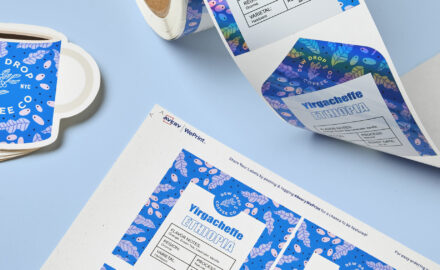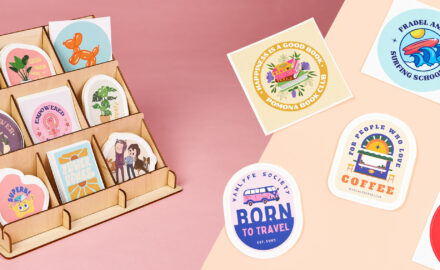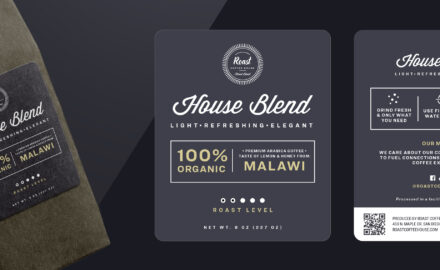How to find the right eco-friendly solutions for your products
Other articles you might like:
Eco-friendly is one of many phrases that has become extremely popular in recent years. You may have seen increased requests for sustainable products for your shop, inquiries about your packaging, or started an eco-friendly journey yourself. As you choose the next steps for your small business, you should consider adding environmental friendliness as a consideration. In this article, we explain what is eco-friendly and what is eco-friendly packaging.
Defining eco-friendly
Eco-friendly is short for environmentally friendly or ecologically friendly, depending on who you ask. In short, these terms mean not harming the earth. Unfortunately, there is no standard legal definition of what is eco-friendly and what is not.
Several organizations and a few governing bodies have moved to define environmentally friendly and create minimum standards. These organizations do amazing work, but the difference in standards means you should look each one up individually when considering products claiming to meet them.
Considerations for environmental friendliness
When considering a product, whether it’s eco-friendly labels or a new electric car, it’s important to start with the raw materials. Raw materials are what the item is made from, and most products use more than one raw material. You want to search for products with the highest percentage of recyclable or biodegradable materials for the best environmental impact.

Then, you must consider how those raw materials are processed into the product you want. You want to consider both the cost of water and electricity as well as the potential pollution. You will need to weigh this for your own company at the rate you need the product.
Transportation is another consideration since it most often burns fossil fuels. As the 2021 supply chain problems demonstrated, there is also a certain level of price volatility and risk associated with transporting goods long distances. Even if the manufacturer is cheaper, you may decide to make the goods for your company closer to home.
The final big consideration is disposal. All products have a limited useful period, and then they need to be disposed of. Depending on the materials, you may be able to count on methods like composting, biodegrading, recycling, and reclaiming as environmentally friendly options. From the product itself to the packaging, it’s all a consideration for your company.
Customer opinions
Generally speaking, more consumers are looking for environmentally friendly alternatives today than they were a decade ago. That means becoming an environmentally friendly small business opens up a market you may not have previously been able to tap into.
Unfortunately, the modern consumer has little time to research every one of their purchases. If you want to reach the environmentally conscious market, you must make sure your products are identifiable as environmentally friendly, such as with an eco-friendly label.
Greenwashing
Going eco-friendly is not easy, especially for a small business. However, doing it authentically matters. Otherwise, your company will become part of a practice known as greenwashing. If you greenwash, you are intentionally representing your business as more eco-friendly than it is. When consumers find out, you may lose business if you greenwashed.
If a company does greenwash, it’s something they hide. You can help yourself stand out on the market through transparency, easy-to-read proof, and more. Distinguishing your company this way lets people know you’re serious about sustainability and attracts more devoted customers.
What is eco-friendly packaging?
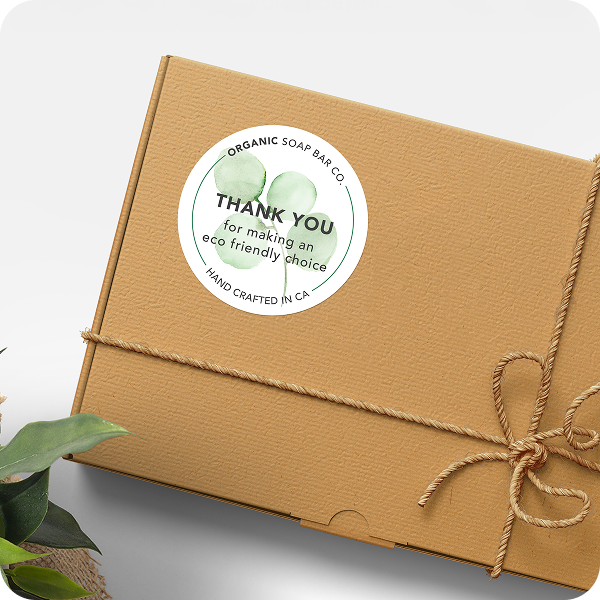
Eco-friendly packaging is a fantastic starting point. It’s an obvious signal of environmental friendliness for your business, and your business should be able to find comparable packaging to what you currently use readily.
Eco-friendly packaging follows the same principles outlined above for environmental friendliness. In addition, it can carry a certification that it meets eco-friendly standards separately from your products or simply a lack of packaging that is not part of the product.
Reusable options
In recent years, you may have noticed companies in your field moving towards reusable packaging options. These can be reused either in your store or by your customers. Generally, reusable options require a slightly higher investment.
For example, if you want to sell soap, it doesn’t need more than eco-friendly labels. Meanwhile, if you’re selling marbles, it makes sense to put them in a small jar and add an eco-friendly label to that. Finally, if you’re selling groceries, you could move towards a zero-waste model where the client buys a jar once and then pays you to refill it as they need it.
Sustainable materials
Eco-friendly packaging and labels now come in a wide variety of materials, so you have options when choosing. Generally, sustainable materials captured from nature replenish quickly, or they are reclaimed from somewhere.
Sustainable materials can refer to options like bamboo, some species of which can grow a foot or more per day. It can also include repurposed materials from other options. You should look into each material individually.
Reduced materials
Another option for eco-friendly packaging is reducing the materials involved in the packaging itself or the labels. For example, consider the average cardboard box for a toy. Does the cardboard need to be that thick? It could be thinner and still look as good in many cases, which makes a difference over time.
Sticking to simple, eco-friendly labels is another example of reduced materials. Smaller labels and labels made from environmentally friendly materials are a great step. You could even choose thinner labels if desired.
PCW
PCW stands for post-consumer waste, which is not the same as recycled. With PCW, the waste has gone through its intended use and has been reclaimed. With recycling, you may see a mix of PCW and materials that consumers could have used but never were. Typically, you see PCW advertised as a percentage of the total makeup.
Paper is the easiest example. PCW for paper means that it was printed on, used somewhere, and then entered the reclamation process. The paper can then become part of recyclable packaging materials, labels, or even more paper.
How does Avery support eco-friendliness?
Avery is committed to delivering convenient, eco-friendly labels to meet all of your business needs. Choosing Avery labels generally means having choices for environmental friendliness, including safe adhesives and recycled materials.
You can buy printable eco-friendly labels online, either by the sheet or in our retail packs. You can also order professionally printed eco-friendly labels from Avery WePrint. These professional labels look amazing and they offer many unique benefits not found elsewhere.
Sustainably sourced labels

First and foremost, choosing sustainably sourced materials helps Avery ensure that labels are what they say they are. Avery procures papers, for example, from a variety of responsible sources.
Due to the wide variety of materials offered through Avery, you are encouraged to check the comparison chart to find the best option for your needs. For example, if you aim for maximum environmental friendliness, you should choose Eco-friendly Matte White for the best results.
Recycling friendly

Recyclability is a necessary trait in eco-friendly labels. However, there are many potential issues you should be aware of when selecting an eco-friendly label. One of them is finishes. Even if the paper is made sustainably, labels with glossy or metallic finishes are not generally recyclable.
The bigger issue, however, is adhesives. These are often not completely recycling center friendly. Avery does offer RCA (recycling compatible adhesives) if you want to ensure your labels meet the standard.
Fewer materials

Some Avery labels use fewer materials than conventional choices, and your company can benefit. Avery delivers the durable label you want without as much waste.
In addition to the lower figure for the materials in the eco-friendly labels, manufacturing them also conserves resources beyond paper. Thinner, eco-friendly labels require less energy, water, and oil to deliver the quality you need for your company.
PCW
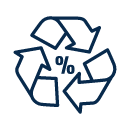
PCW is a material that has already served one useful purpose for consumers. Avery helps put it to a second use through exceptional labels for your company. Products made from PCW keep the material out of landfills, which is a win for everyone. If you choose Avery eco-friendly labels for your company, you can see PCW in both liner materials and face stock.
One more thought
Eco-friendly should not be a buzzword or a marketing gimmick. Instead, it should be something companies like yours introduce because you see the benefits of eco-friendly labels and packaging.
Eco-friendly labels and packaging do not need to be complicated. Your company needs to weigh the options and commit to change. With so many options on the market, your company can make the environmentally-friendly choices you want.


